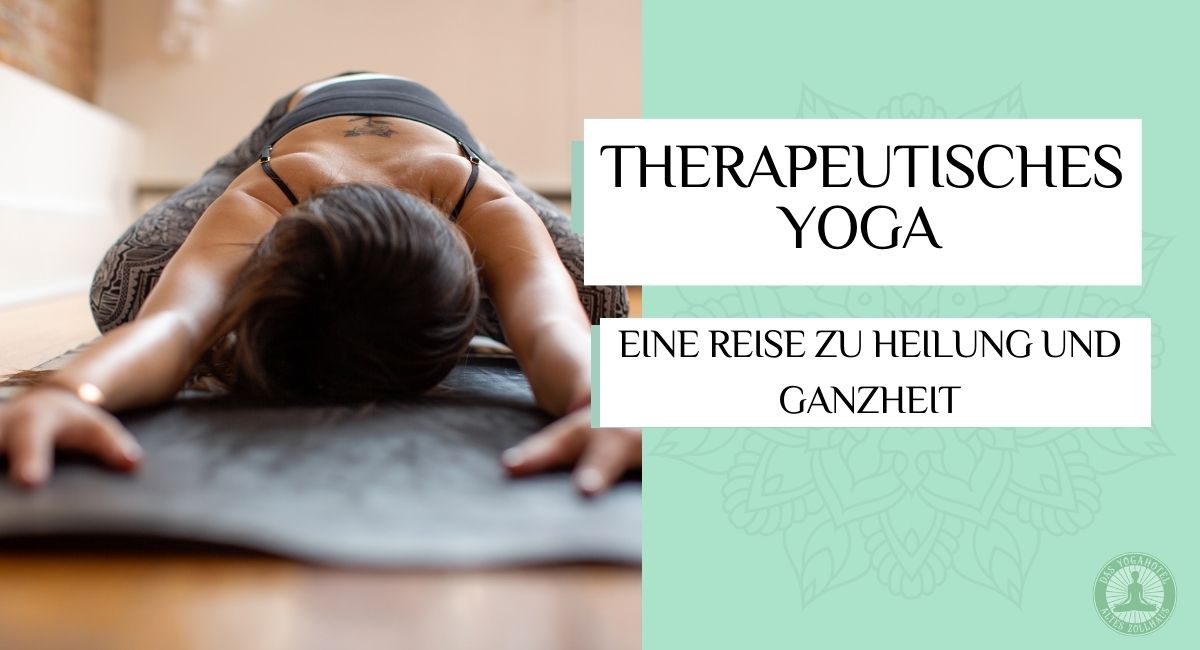At a time when hectic and time pressure often dominate our everyday lives, there is a growing need for effective methods to bring body and mind back into harmony. This is precisely where therapeutic yoga can provide valuable support. Instead of concentrating solely on fitness or flexibility, this specialised form of yoga focuses on healing and alleviating individual complaints.
The aim is to reduce stress, find inner peace and treat physical imbalances in a targeted manner.
What is therapeutic yoga?
Therapeutic yoga goes beyond simply taking yoga poses (asanas). It is based on a tailor-made exercise programme that is adapted to your personal needs.
The individual sequences can help to relieve both physical complaints - such as tension or back pain - and inner tension.
Breathing techniques (pranayama) and mindfulness exercises are often incorporated to bring body, mind and soul into a harmonious dialogue.
Origins of therapeutic yoga
Therapeutic yoga has its roots in the centuries-old traditions of yoga in India, where it was recognised early on that physical and breathing exercises can initiate a holistic healing process.
Over time, yogis and doctors have specialised in developing certain exercise methods that specifically target health complaints. This close combination of ancient knowledge and a modern therapeutic approach is what makes therapeutic yoga so unique.
Traditional yoga vs. therapeutic yoga
Classical yoga - for example in fitness studios or general yoga classes - can have a relaxing and invigorating effect. However, traditional classes often follow a fixed sequence of exercises that do not always take specific physical conditions into account.
Therapeutic yoga In contrast, each participant is considered unique. The practice is adapted to medical findings or specific goals and can thus specifically alleviate symptoms or support recovery.

You are interested in yoga - here you will find an overview of upcoming events.
Advantages of therapeutic yoga
The positive effects extend to various areas:
- Physical strengthening: Adapted exercises can build up muscles and improve joint mobility.
- Stress reduction: Breathing and relaxation techniques help you to reduce inner restlessness and keep a clear head.
- Deeper body awareness: Those who engage in this practice sharpen their awareness of the body's signals, which leads to more mindfulness in the long term.
Health conditions and therapeutic yoga
Many people with chronic complaints or general movement restrictions are discovering therapeutic yoga as a complementary method to conventional medicine.
Regardless of whether you are affected by back pain, respiratory problems or psychosomatic symptoms: In many cases, this form of yoga can contribute to a significant improvement in well-being.
By specifically selecting and adapting the exercises, incorrect posture can be corrected and more flexibility gradually built up.
The connection between yoga and emotional and spiritual well-being
When people think of therapeutic yoga, the physical component is often the first thing that comes to mind. However, the mental and emotional effects should not be underestimated either. Concentration on the breath and mindfulness exercises create a space of calm in which you can organise your thoughts and release inner tension. For many people, this results in a deepening of awareness and often even a feeling of connection with themselves.
Specific yoga poses and techniques in therapeutic yoga
In a therapeutic yoga class, great importance is placed on a gentle approach. Aids such as cushions, straps or blocks are often used so that you can hold individual poses for longer and without overstraining yourself.
Breathing techniques that help to calm the mind are also particularly helpful. Depending on the symptoms, the yoga therapist may also recommend regenerative exercises to specifically release tension in certain areas of the body.
Integrate yoga into daily life
One major advantage is that therapeutic yoga is relatively easy to incorporate into your everyday life. Just a few minutes of conscious breathing or a short exercise session can help you to centre yourself and reduce stress. Regular practice is crucial for the positive effects to deepen.
If you like, you can also integrate small mindfulness rituals into your everyday life, such as a short body scan in the morning or targeted relaxation exercises before going to bed.
Possible risks and disadvantages
As with any physical activity, you should check with your doctor or therapist before starting whether therapeutic yoga is suitable in your case. Be careful not to overexert yourself.
The exercises can be individually adapted to your fitness level, which significantly reduces the risk of injury. In the event of serious health problems, close consultation between yoga teachers and medical professionals is recommended.
Expert opinions on therapeutic yoga
Many experts praise the holistic effect of this method. Thanks to the combination of physical exercise, breath control and mindfulness, doctors and psychologists recognise therapeutic yoga as a valuable addition to conventional treatments.
Whether as part of a rehabilitation programme or to prevent stress in everyday life - the positive feedback from users and experts confirms the potential of this mindful practice.
Therapeutic yoga is a gentle but effective way to strengthen body and mind. For many, the conscious decision to look inwards can be the first step towards healing and wholeness.
"Therapeutic yoga: areas of application and benefits at a glance"
| Health complaint | Possible yoga techniques | Advantages for those affected | Important notes |
|---|---|---|---|
| Back pain |
|
Relief of tension, improvement of spinal alignment | Seek medical advice beforehand in case of severe pain |
| Respiratory problems |
|
Expansion of the lung volume, promotion of calmer breathing | Slowly increase breathing exercises; pay attention to personal limits |
| Stress and inner turmoil |
|
Calms the nervous system, improves stress resistance | Regular, short sessions are often more effective than infrequent, long ones |
| Joint problems |
|
Improved mobility, relief for the joints | In case of acute inflammation, only exercise in consultation with a doctor |
| Mental stress (e.g. depression, anxiety) |
|
Promotion of self-awareness, balancing of the nervous system | Therapeutic yoga can have a complementary effect, but does not replace psychological treatment |


